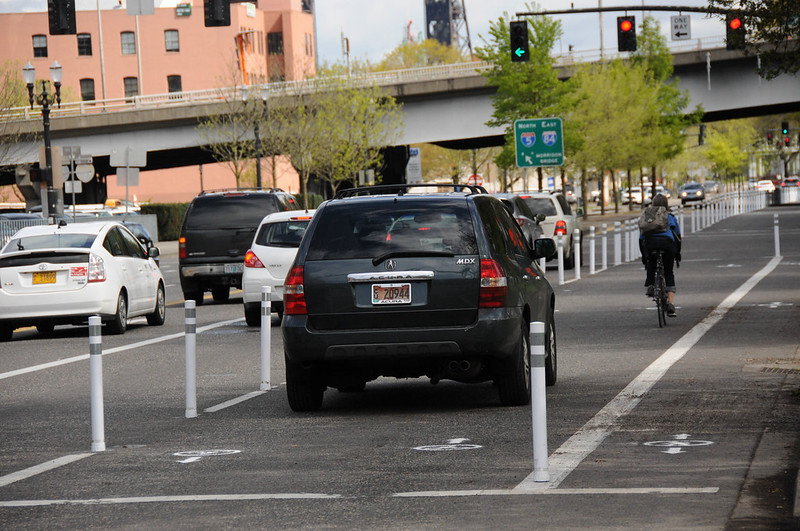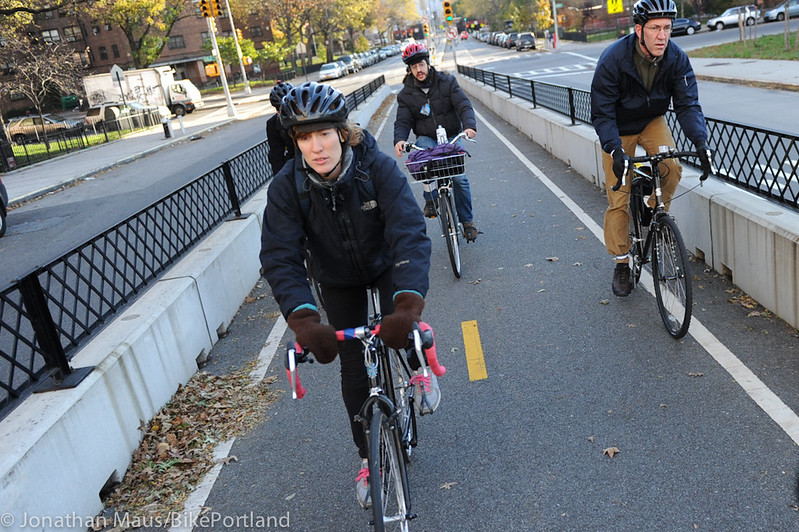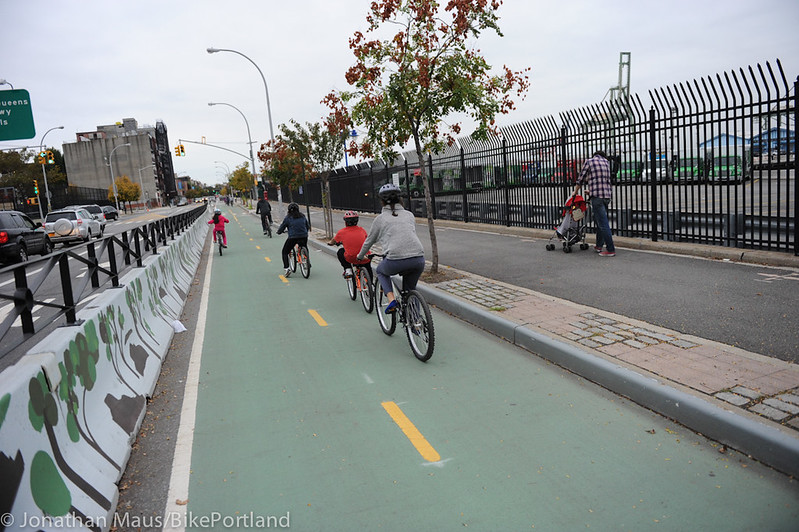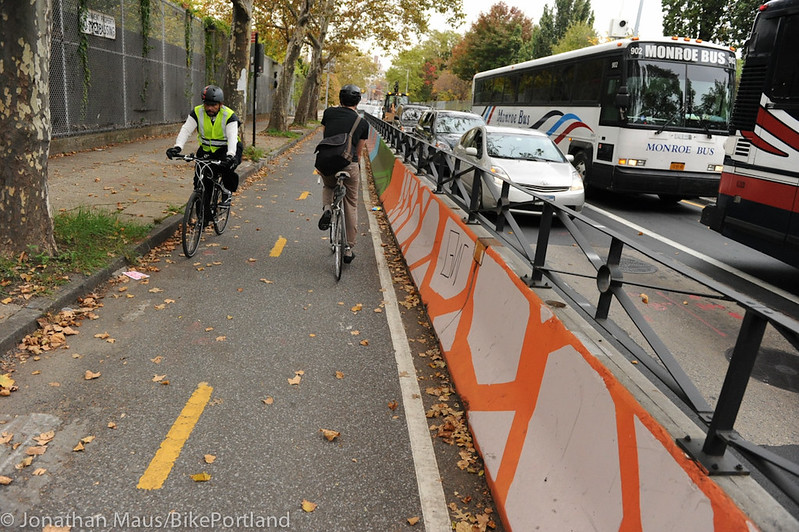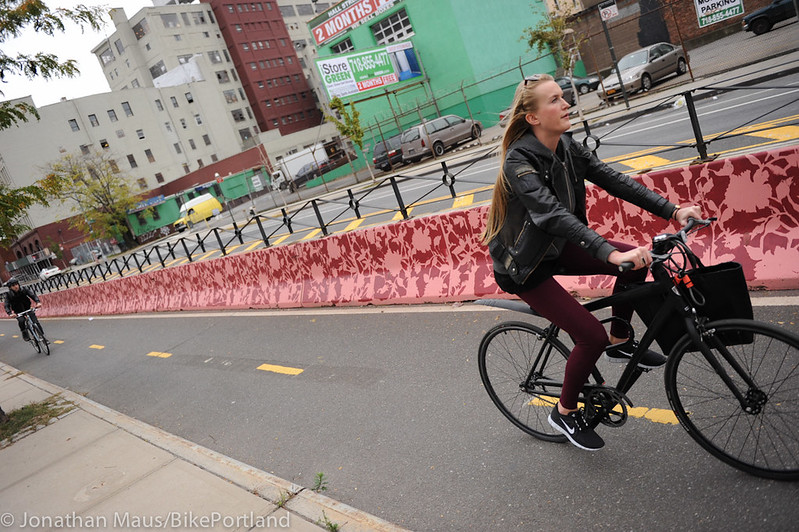Let me make this as clear as possible: If Portland wants to get more people cycling, we must provide a network of high-quality, physically protected routes that are connected to destinations. Any bikeway that does not provide physical protection from “A to B” that’s both real and perceived is a gap in the network.
I bring this up because of the fanfare that launched Better Naito last week. Don’t get me wrong, I think the fanfare is justified. The volunteers who advocated for the project initially and the city staff that have embraced it have many reasons to be proud. But let us not forget that this is still second-rate infrastructure designed on the cheap.
So we shouldn’t be surprised that it doesn’t work as well as it should.
During the Better Naito press conference, a man in a small Acura SUV drove right into the bike-only lane, following right behind a woman on a bicycle (in photo above). He was completely clueless that he had crossed over in a no-car zone. I dismissed it as a fluke and thought, surely, that with 470 plastic bollards installed by expert city engineers, we wouldn’t have to worry about such things.
Then I got home and someone texted me a video…

Advertisement
Then I saw this via Twitter today…
@CCCPortland driver N-bound, turning R in truck almost hit me in #betterNaito. #WTH #bikemonth @PBOTinfo @BikePortland #ifNotThereThenWhere
— JayBee (@j3pdx) May 2, 2017
Sigh.
How do we prevent this? It’s extremely simple. Just design it like we mean it and add real protection. Make our bikeways clueless driver proof. Here are a few examples I saw during a trip to New York City in 2012…
It’s widely known that Portland’s reputation as a great cycling city has been damaged by our lack of protected bike lanes. The most recent example is an article in Sightline by David Goldberg (the man who coined the term “complete streets”) who determined that Vancouver, Canada is now the best big bike city in Cascadia. That’s despite the fact that by sheer volume we have nearly twice as many “bikeway miles” as they do. The chart below shows the key discrepancy…
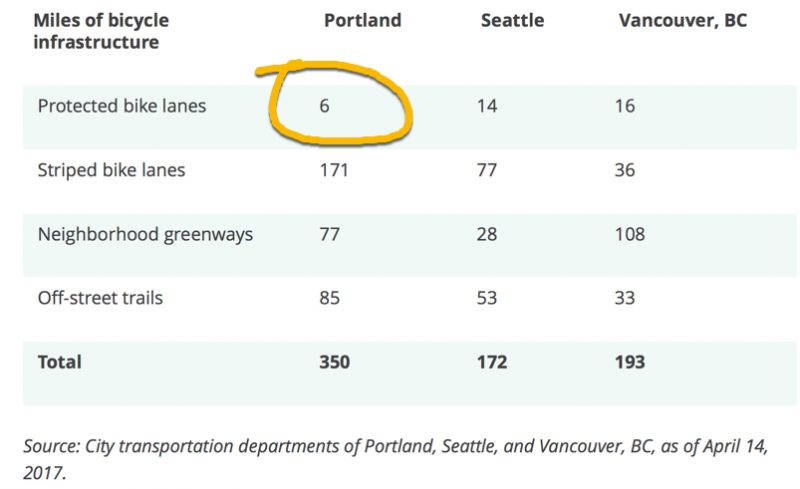
We must do more to protect the most vulnerable road users from the ones with the potential to do most harm. I guess we’re making progress. Better Naito started with traffic cones and wood palettes. Now it’s got flexible plastic bollards. How long do we have to wait for something that will actually deter people from putting their dangerous motor vehicles where they don’t belong?
— Jonathan Maus: (503) 706-8804, @jonathan_maus on Twitter and jonathan@bikeportland.org
BikePortland is supported by the community (that means you!). Please become a subscriber or make a donation today.


